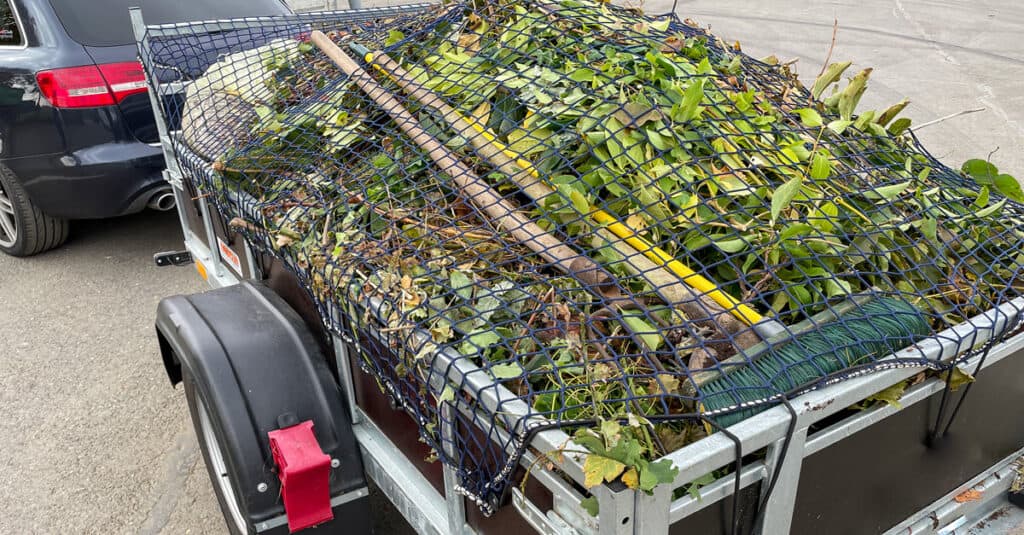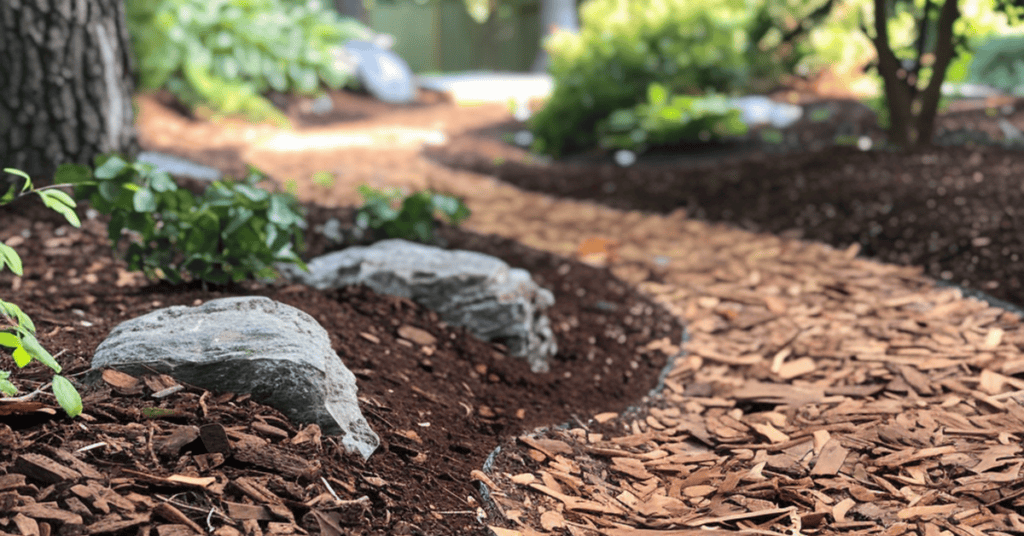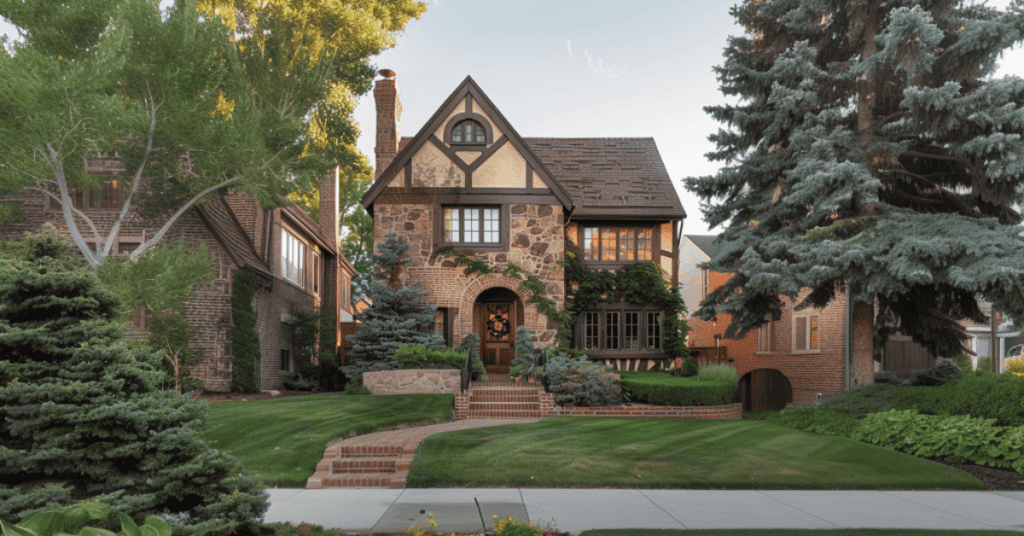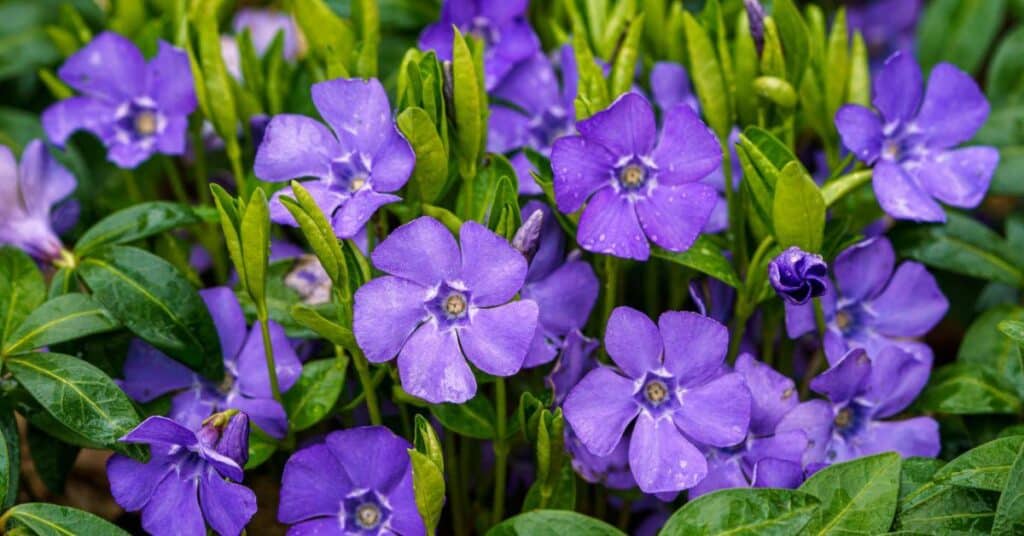Decomposed Granite for Your Colorado Landscape
10 Ways to Use Decomposed Granite in Your Landscape
Decomposed granite (DG) is a common material used in landscaping in residential areas along Denver’s Front Range communities. Landscaping with decomposed granite is ideal for pathways, driveways, and garden areas. As a landscape rock, it offers durability, low landscape maintenance requirements, and a natural appearance.
Decomposed granite stone forms from the natural weathering and erosion of solid granite, an igneous rock. Over time, the granite breaks down into smaller pieces, primarily composed of feldspar, quartz, and mica. These elements give DG its unique sandy texture and make it a perfect decorative rock to include in your overall landscape design. The particles are typically three-eighths of an inch or smaller, and the material can feel similar to gravel but finer and more stable.
DG Variants
Different variants and enhancements of decomposed granite stone (DG) are available to suit diverse landscaping needs. These options vary in terms of stability, appearance, and functionality, making DG a versatile material for many outdoor projects.
Natural DG
Natural DG or Non-stabilized DG is simply decomposed granite without any additives. It has a more natural appearance but is less durable. This type is often used in areas where less stability is needed, such as a garden bed or around trees. This type is a loose DG and allows for good drainage.
Stabilized DG
A stabilizer is mixed in with the granite particles to create Stabilized DG. This creates a firm surface that can withstand foot traffic and weather changes better than non-stabilized DG. It’s ideal for pathways, driveways, and high traffic areas.

Decomposed Granite Works Well in High Traffic Areas Like Walkways and Pathways
Resin-Coated DG
This type has a stronger binding agent, making it durable and suitable for driveways and commercial areas.
How DG Compares to Other Similar Landscaping Material Options
Here, we’re going to take a look at how DG compares to other materials that are used for similar applications to help you determine what will work best for your landscaping project. Specifically – we’ll look at gravel and landscape glass to see how they stack up against Decomposed Granite.
Comparing Decomposed Granite, Landscape Glass, and Gravel
Landscape Glass
- Material: Landscape glass is made from recycled glass that has been tumbled to remove sharp edges, making it safe for use in outdoor settings.
- Appearance: It comes in a variety of colors and can add a vibrant, decorative element to gardens, pathways, and other landscape features.
- Durability: It is very durable and does not degrade over time. It retains its color and shape, making it a long-lasting option.
- Maintenance: Requires minimal maintenance. It doesn’t decompose or attract pests.
- Usage: Often used for decorative purposes, including mulch, pathways, water features, and as an accent in garden beds.
Gravel
- Material: Gravel is composed of small, loose rock fragments. It can be made from a variety of stone types, including granite, limestone, and basalt, among others.
- Appearance: Gravel is available in a wide range of colors, including gray, white, brown, red, and even blue, depending on the type of stone and its source. It can have a smooth, rounded texture (like pea gravel) or a more angular, rough texture (like crushed stone). In both cases, gravel tends to be more coarse than DG.
- Durability: Gravel is highly durable and can last for many years with proper installation and maintenance. It doesn’t degrade easily and can withstand various weather conditions. It provides a stable surface that can support weight, making it suitable for pathways, driveways, and other high-traffic areas.
- Usage: Ideal for pathways, walkways and driveways. Can also be used as a durable inorganic mulch to prevent erosion and help to keep weeds in check. Due to its small size, it can also be used in drainage areas as it allows water to pass through.
Decomposed Granite
- Material: Decomposed granite (DG) is a natural derivative of granite rock that has weathered and eroded into smaller particles.
- Appearance: It has a more natural, earthy look with colors typically ranging from tan to brown. It can create a rustic or natural look in landscapes.
- Durability: While durable, it can be subject to erosion over time, especially in areas with heavy rain or foot traffic.
- Maintenance: Requires occasional replenishment and may need to be compacted periodically to maintain a stable surface. It can also generate dust when dry.
- Usage: Commonly used for pathways, driveways, patios, and as a ground cover. It provides a firm surface that can still allow water to permeate through, making it environmentally friendly.
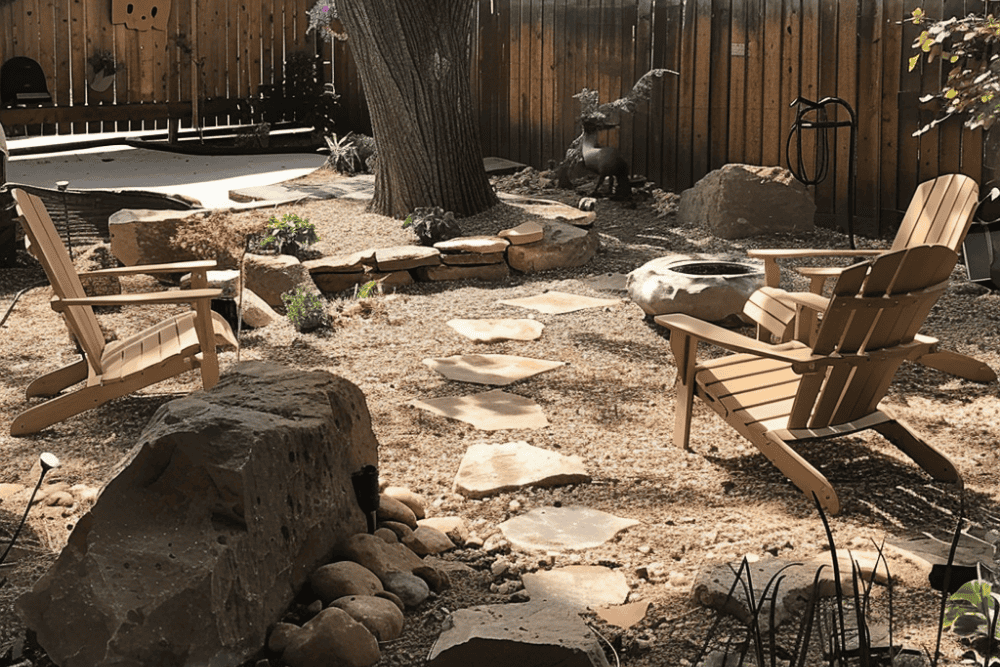
A Decomposed Granite Seating Area
Decomposed Granite vs Landscape Glass
Landscape glass is decorative, colorful, low-maintenance, and very durable. If you’re looking to add a noticeable “pop” to your yard, landscape glass can really help your property stand out. DG isn’t quite as decorative, but does have a natural earthy look.
From a maintenance perspective, DG requires some maintenance, and can erode over time. Landscape glass requires minimal maintenance, as it does not degrade, erode, or attract pests.
From a pure functionality perspective, DG is well suited for compacting and stability for surfaces like pathways or driveways – landscape glass is geared more towards decorative use.
From a cost perspective, landscape glass can be significantly higher than that of decomposed granite.
Decomposed Granite vs Gravel
DG offers a more natural look and a finer texture compared to gravel. It is popular in landscaping due to its aesthetic appeal and ability to blend seamlessly with plantings and other natural elements. It is permeable, allowing moisture to pass through for proper drainage.
Gravel is better suited for high rainfall areas due to the tendency of DG to break down and erode over time. As a result DG may require more maintenance and occasional replacement over time. Gravel also comes in a wider variety of colors. It does require occasional raking and leveling to keep it properly maintained. Due to its larger size, gravel is also more likely to let weeds grow through. This generally necessitates the use of landscape fabric underneath gravel to prevent weed growth.
Where to Use DG in Your Denver Metro Landscape
Paths and Walkways
Decomposed granite is excellent for paths and walkways. It’s compact yet permeable nature provides a stable surface without much maintenance. The fine particles interlock, forming a solid base that easily withstands walkway foot traffic.
Patios and Outdoor Seating Areas
A decomposed granite patio offers a rustic, natural look. They are durable and can handle furniture and foot traffic. Outdoor seating areas benefit from DG’s low maintenance and natural drainage.
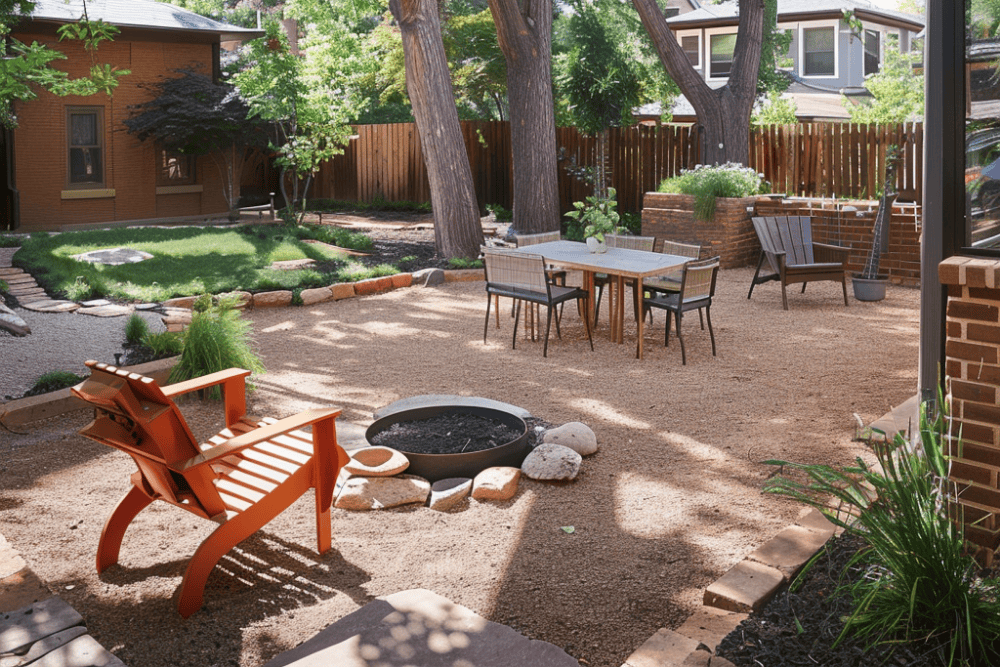
A DG Patio in a Residential Front Range Backyard
Driveways
Using decomposed granite for driveways provides a unique and durable surface. Its ability to handle heavy weights makes it suitable for vehicle traffic. A properly compacted DG driveway offers a strong, stable surface.
Installation and Construction
Preparing the Base
Proper preparation of the base is critical for a stable decomposed granite pathway. Begin by excavating the area to a depth of 4-6 inches (10-15 cm), ensuring the pathway is clear of vegetation, rocks, and debris. Creating a slight slope will help with water runoff.
Once the area is clean, add a layer of landscape fabric to prevent weed growth. This fabric acts as a barrier, keeping the DG free from invasive plants. It’s also important to install edging material like metal, wood, or plastic to define and contain the pathway.
Laying and Compacting DG
Laying decomposed granite involves distributing the material evenly across the prepared base. Spread a 2-3 inch layer of DG and then use a plate compactor to compact the granite. This step is vital for creating a firm surface. For pathways, stabilized DG is recommended as it includes stabilizers that help bind the particles together, providing additional strength and longevity.
After initial compaction, add another layer of DG to reach the desired thickness, then compact again. This may need to be repeated to achieve a solid, even surface.
Materials and Costs
Decomposed granite (DG) is a popular material in landscaping due to its cost-effectiveness and natural appearance. The following sections will detail the key factors affecting the costs of DG and compare prices of various types available on the market.
Cost Factors
Several elements influence the cost of decomposed granite. The price for raw DG material varies widely, typically ranging between $30 to $50 per cubic yard. This cost can increase if stabilizers are added for more durability.
Hiring a contractor will also impact the cost. For installation, expect to pay around $5 to $8 per square foot. Whether the area is flat or has slopes can affect labor costs.
Important Cost Factors:
- Raw Material Costs: $40-$50 per cubic yard
- Stabilizers: Additional cost
- Installation: $4-$6 per square foot depending on site conditions
Comparing Prices of Different DG Types
Not all DG is the same, and prices vary accordingly. Standard DG is the most affordable, with costs starting around $40 per cubic yard. Stabilized DG, which includes binders for a more solid surface, costs more due to the added materials.
Meanwhile, resin-coated DG provides a higher-end finish and can be more durable, but it’s the most expensive option. For example, small projects using raw DG can cost as little as $60.
Types and Prices:
- Standard DG: $40-$50 per cubic yard
- Stabilized DG: Higher due to binders
- Resin-Coated DG: Most expensive, offers premium finish


